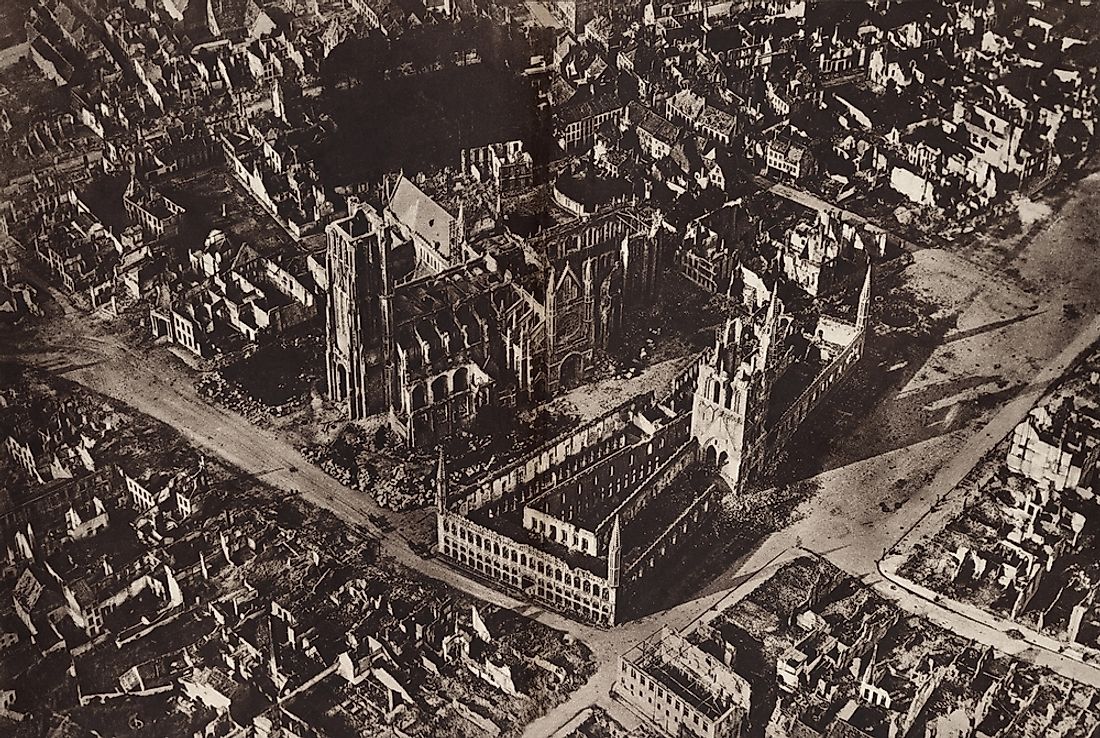Second Battle of Ypres - Famous Battles in History

5. Background
There were six engagements in the second battle of Ypres: the battle of Gravenstafel, the battle of St. Julien, the battle of Frezenberg, the battle of Bellewaarde, the battle of Hooge, and the second attack on Bellewaarde. The battle of Gravenstafel took place from April 22-April 23, 1915. It was followed by the battle of St. Julien which occurred between April 24-May 4 of the same year. The next war was the battle of Frezenberg which took place from May 8-13, 1915. Ten days later, the battle of Bellewaarde followed lasting from May 24-25. The battle of Hooge occurred between July 30-31 and on September 25, 1915 the second attack on Bellewaarde took place.
4. Makeup of the Forces
The battle was between the French, Germans, and their allies as part of the Western front of World War I. The forces were made up of two French and six British divisions. There were II Corps and V Corps of the Second Canadian Army. These corps consisted of 1st, 2nd, and 3rd Cavalry divisions. The commanders and leaders of the forces included Arthur Currie, Albrecht of Württemberg, Herbert Plumer, and Thèophile Figeys. The war also employed forces from Princess Patricia’s Canadian Light Infantry which proved very helpful in granting support to the French troops who had been furiously attacked by the Germans.
3. Description of the Engagement
The Battle of Ypres started on April 22, 1915 when the Germans released a cloud of poisonous chlorine gas on the French troops. The French soldiers sustained casualties and many died within 10 minutes of inhaling the gas. Some troops were blinded by the poisonous gas attack. The sight was terrifying and many French troops fled for their lives. However, a few stayed, holding firm their bid to fight until the end. The courageous troops received the 10th and 13th Battalions of Princess Patricia's Canadian Light Infantry because of their bravery.
2. Outcome
The greatest outcome of the war was that the Canadians earned control of the Flemish town. Although at one point it seemed like the German forces were winning the battle, the French fought on tirelessly and courageously to a victorious end. The Germans attacked the war fronts very ruthlessly. Approximately 87,223 soldiers were either killed, wounded, or went missing during the war. The Canadian field artillery was also improved as a result of the shortcomings of the war. Better methods of dealing with gas poison attacks were developed since the “urine theory” did not prove very helpful during the war. The war also led to medical research that would help in curing poisonous gas attacks in the future.
1. Historical Significance and legacy
The second battle of Ypres was fought between April 22 and May 25 in 1915. It is historically significant because it was the first time a colony defeated Europe in a battle fought on their soil. This was a great legacy for the Canadian forces. However, the legacy was not easily earned as they had to pay the price of losing most of their troops who were either wounded, killed, or had went missing. The Canadian and German forces were at war because they both wanted control of the strategically located Flemish town of Ypres of Belgium.







